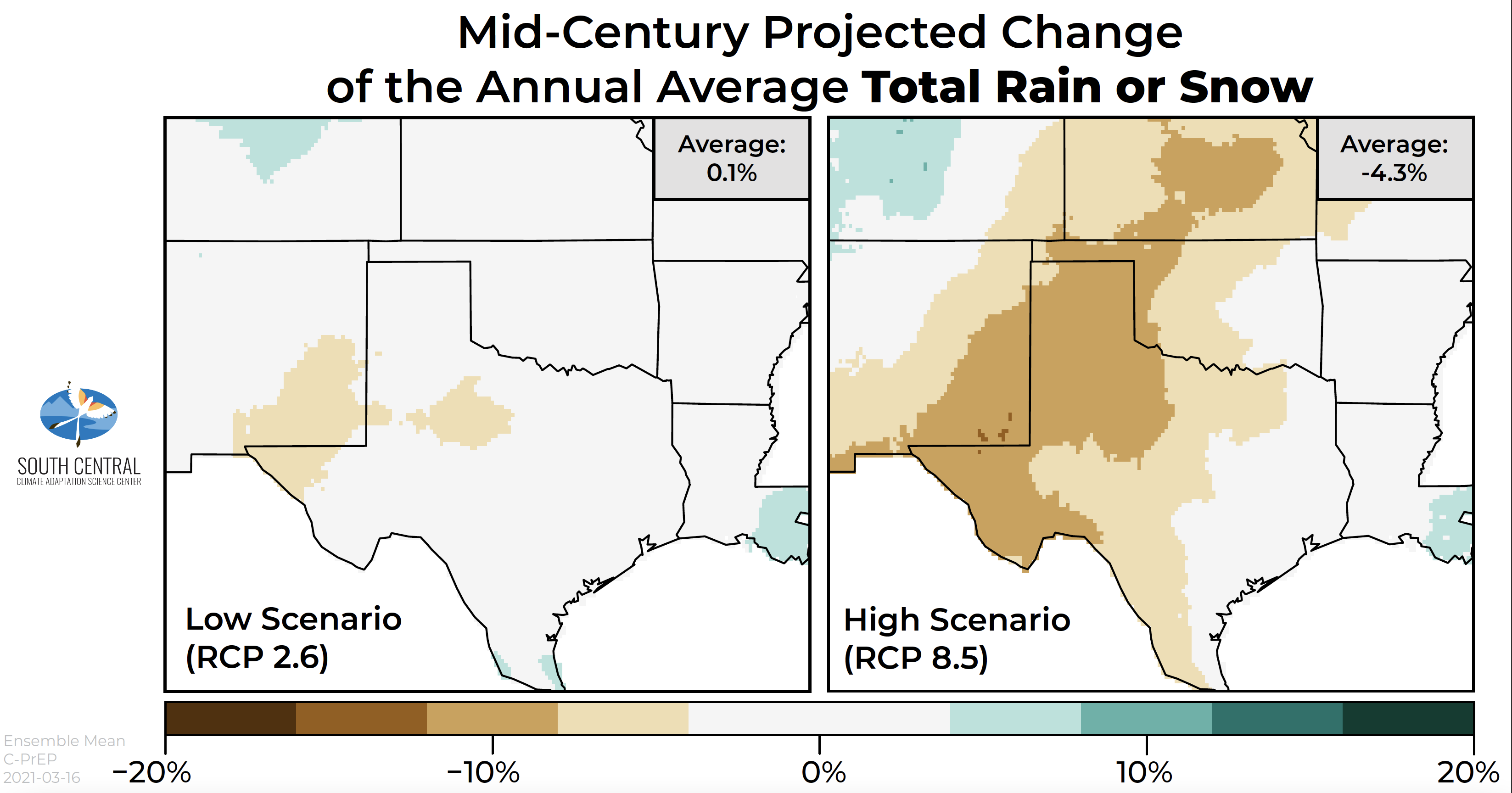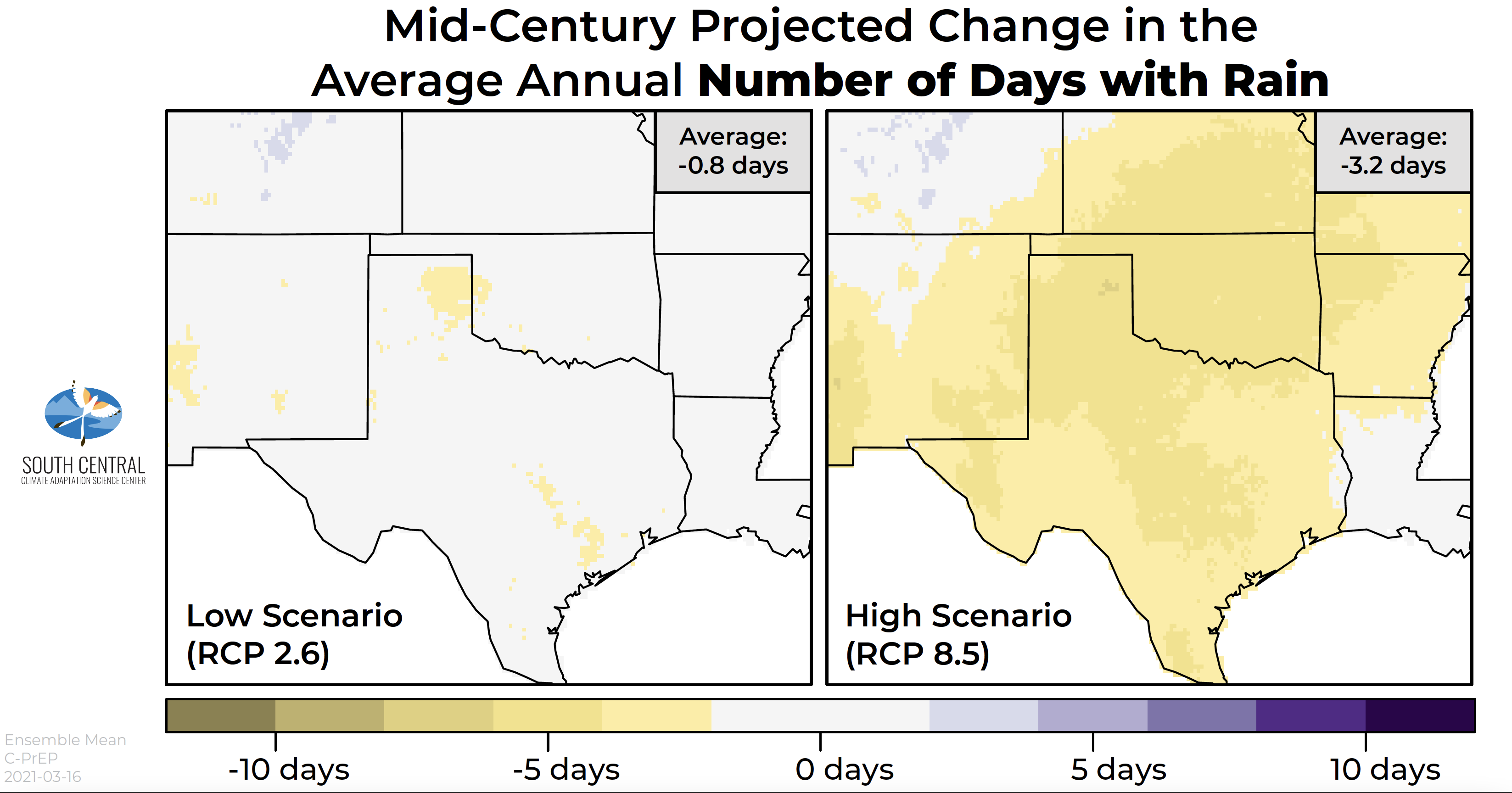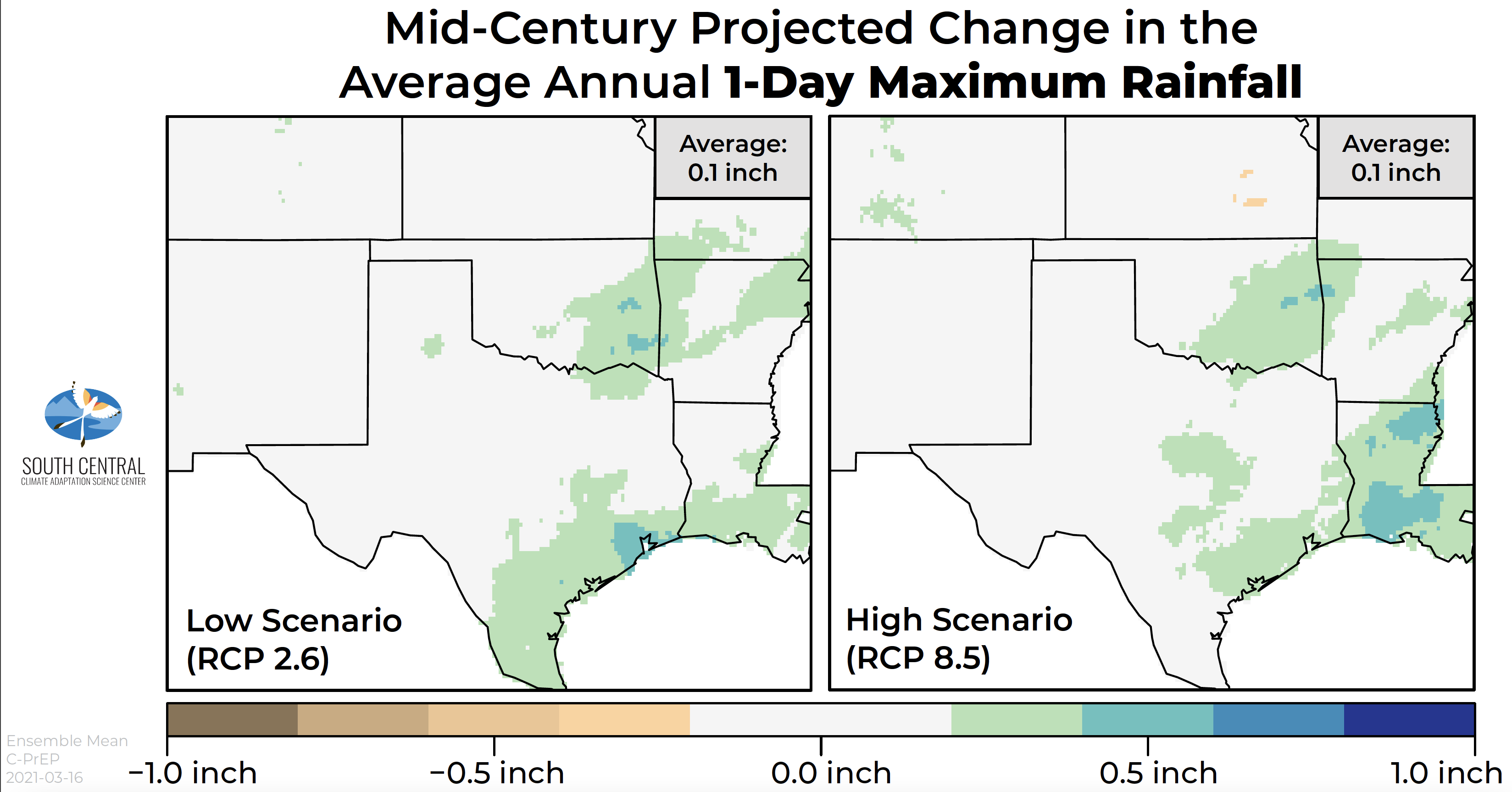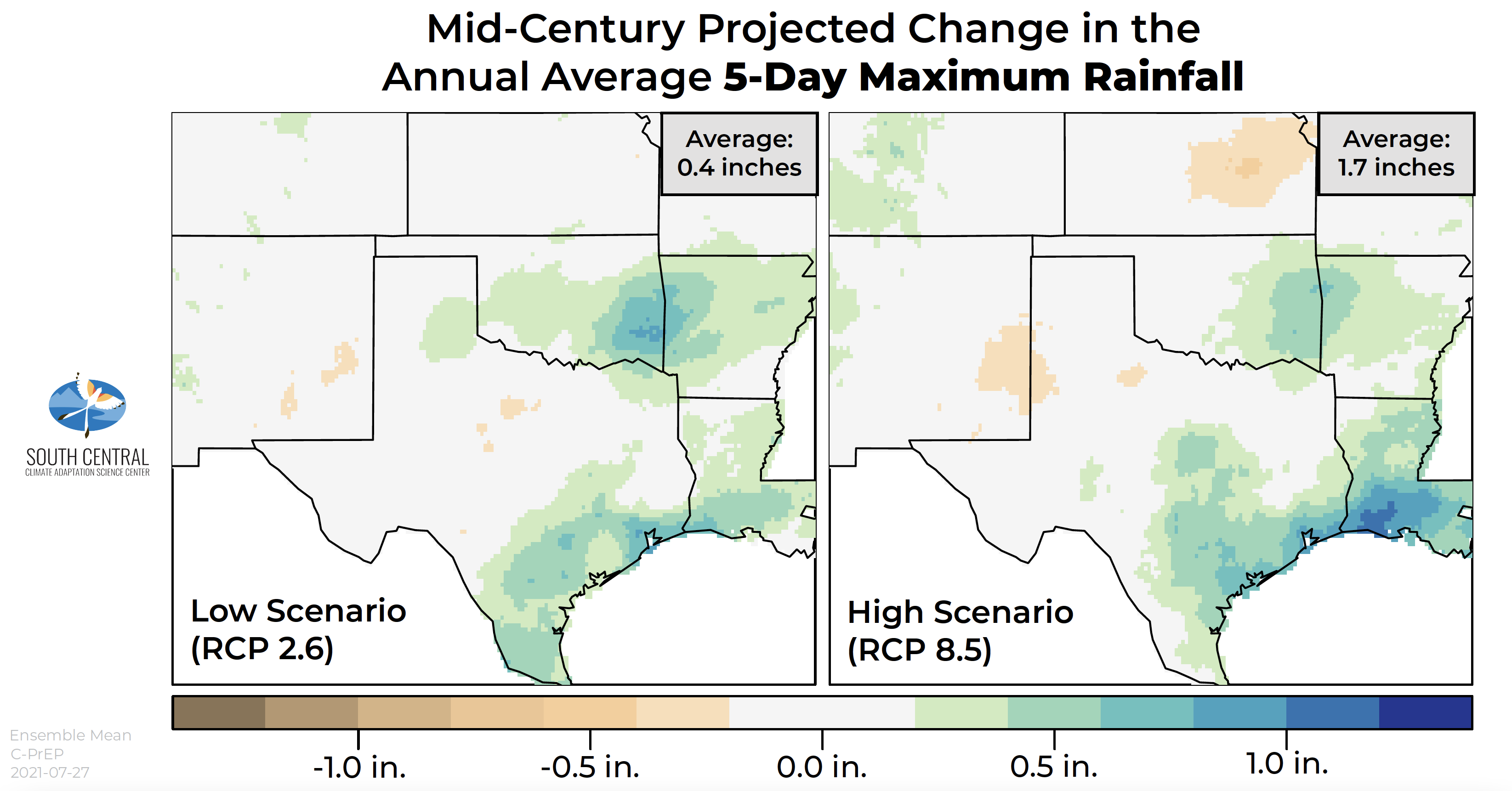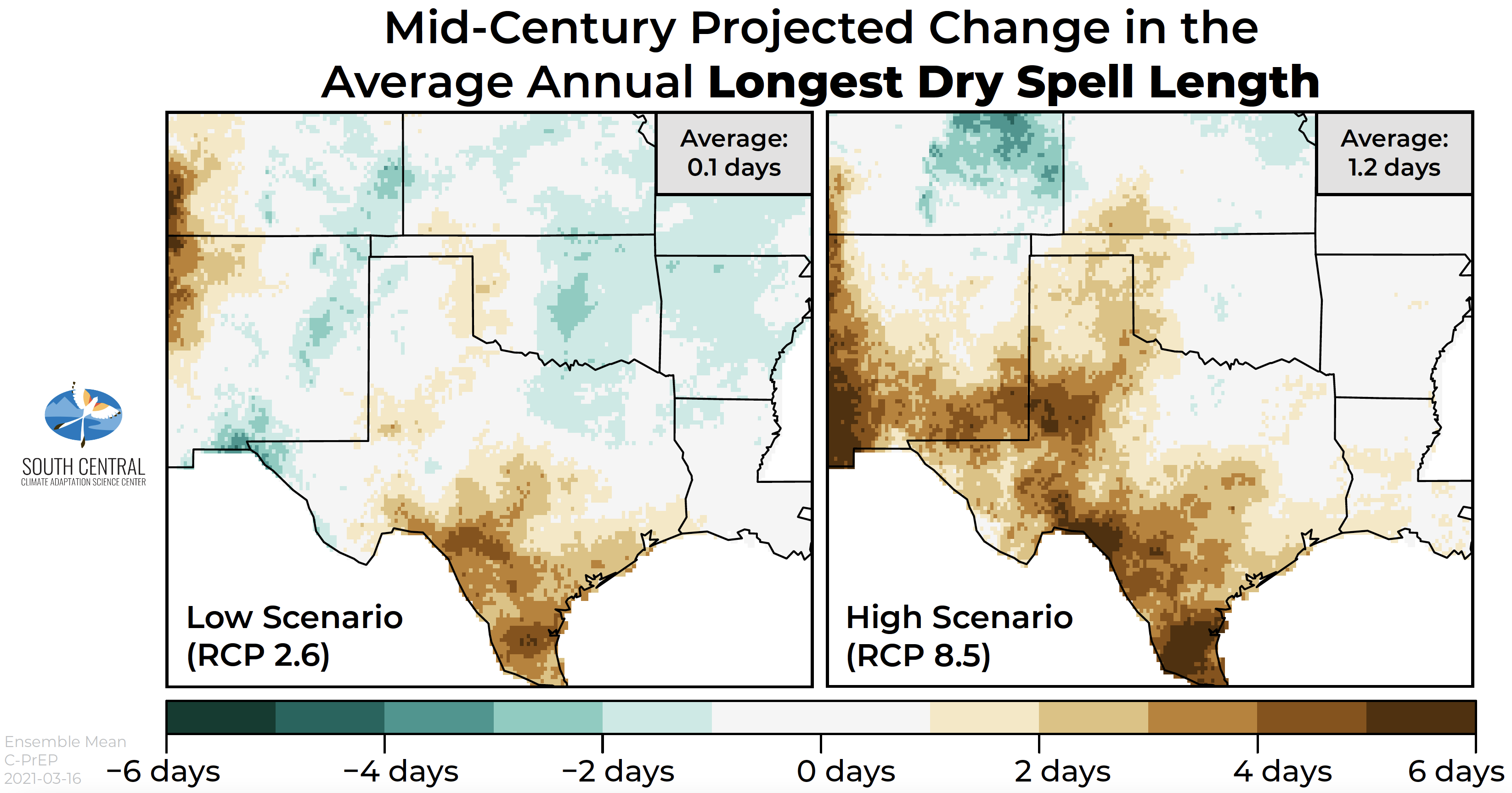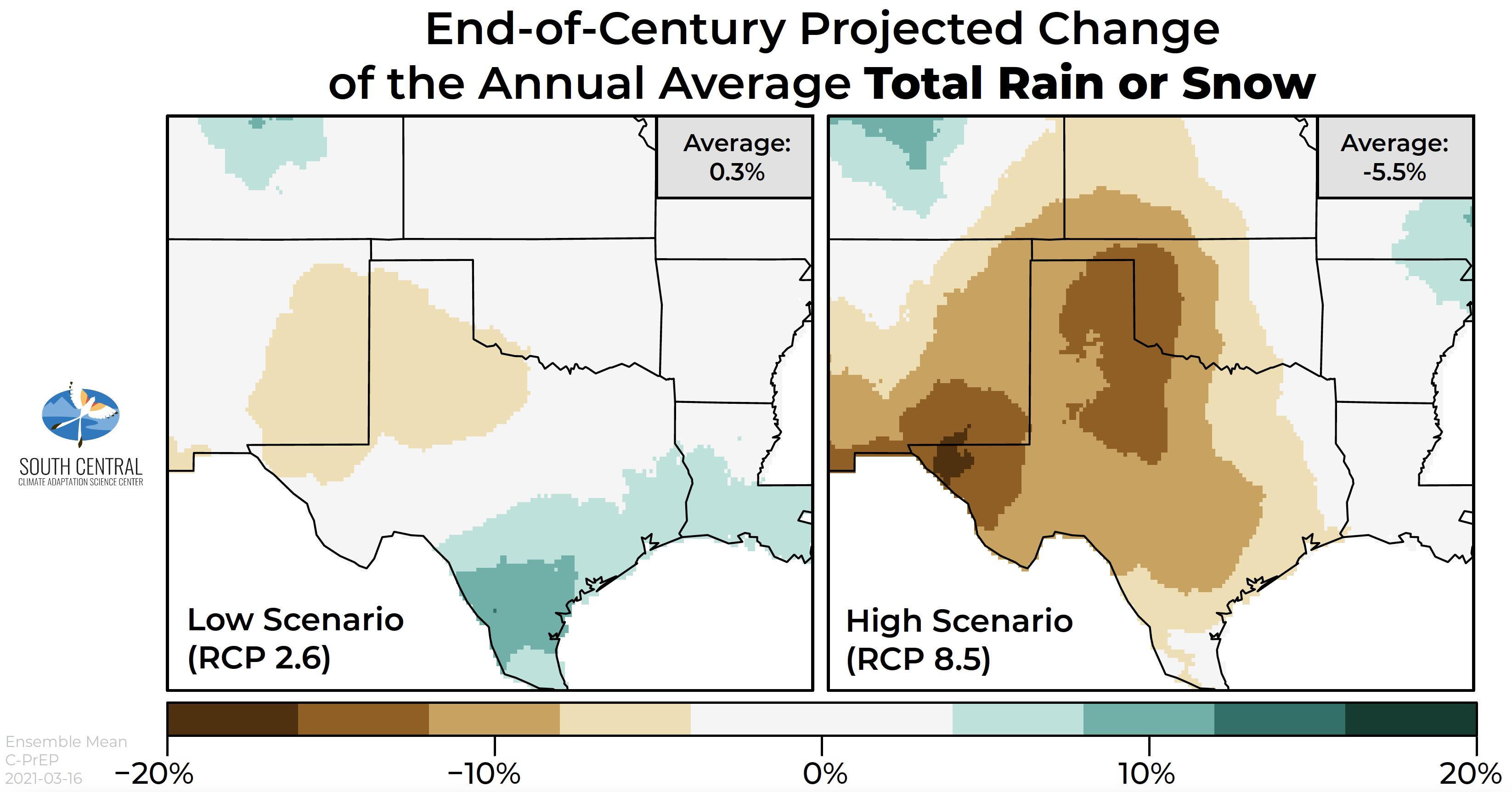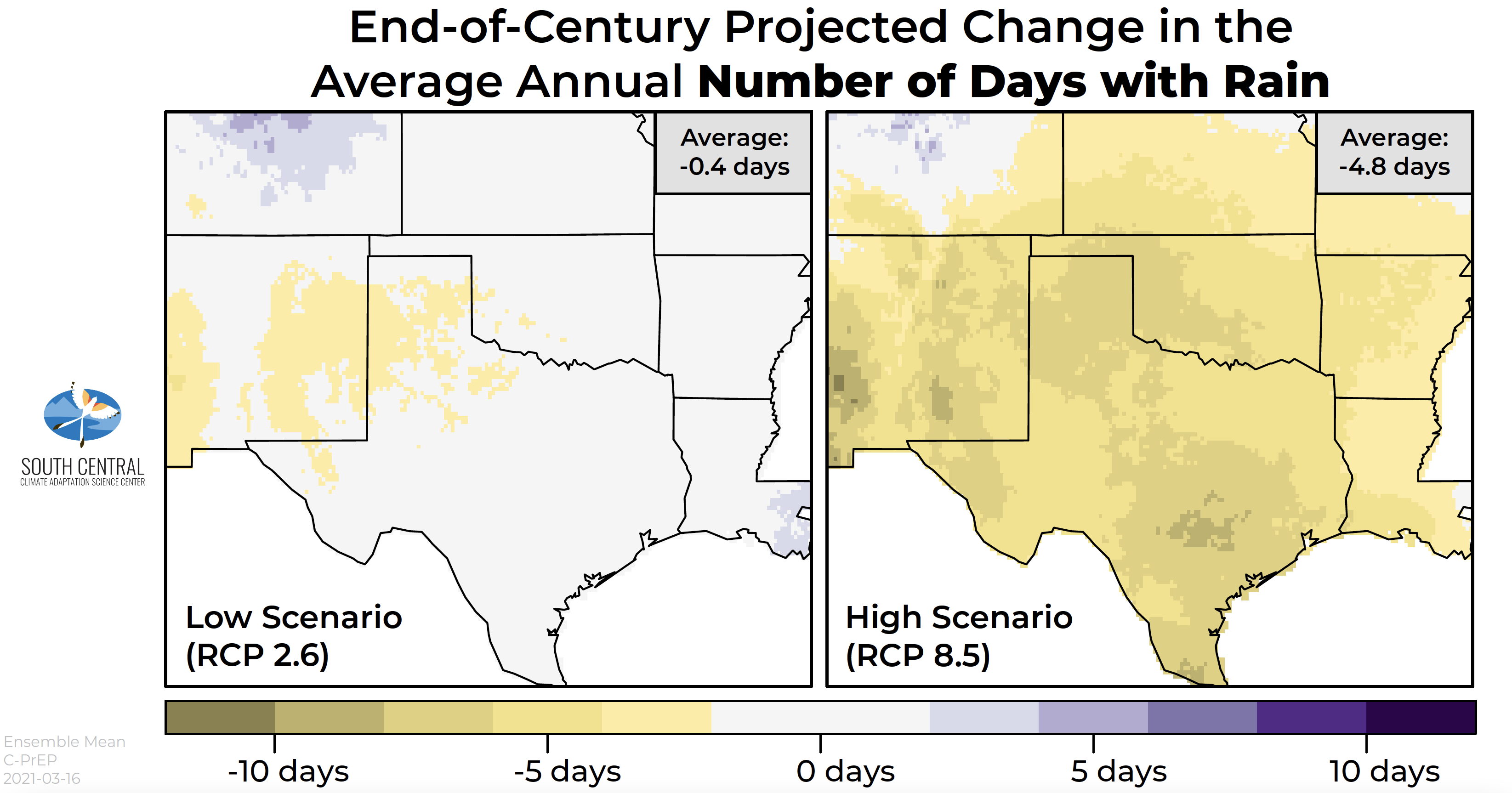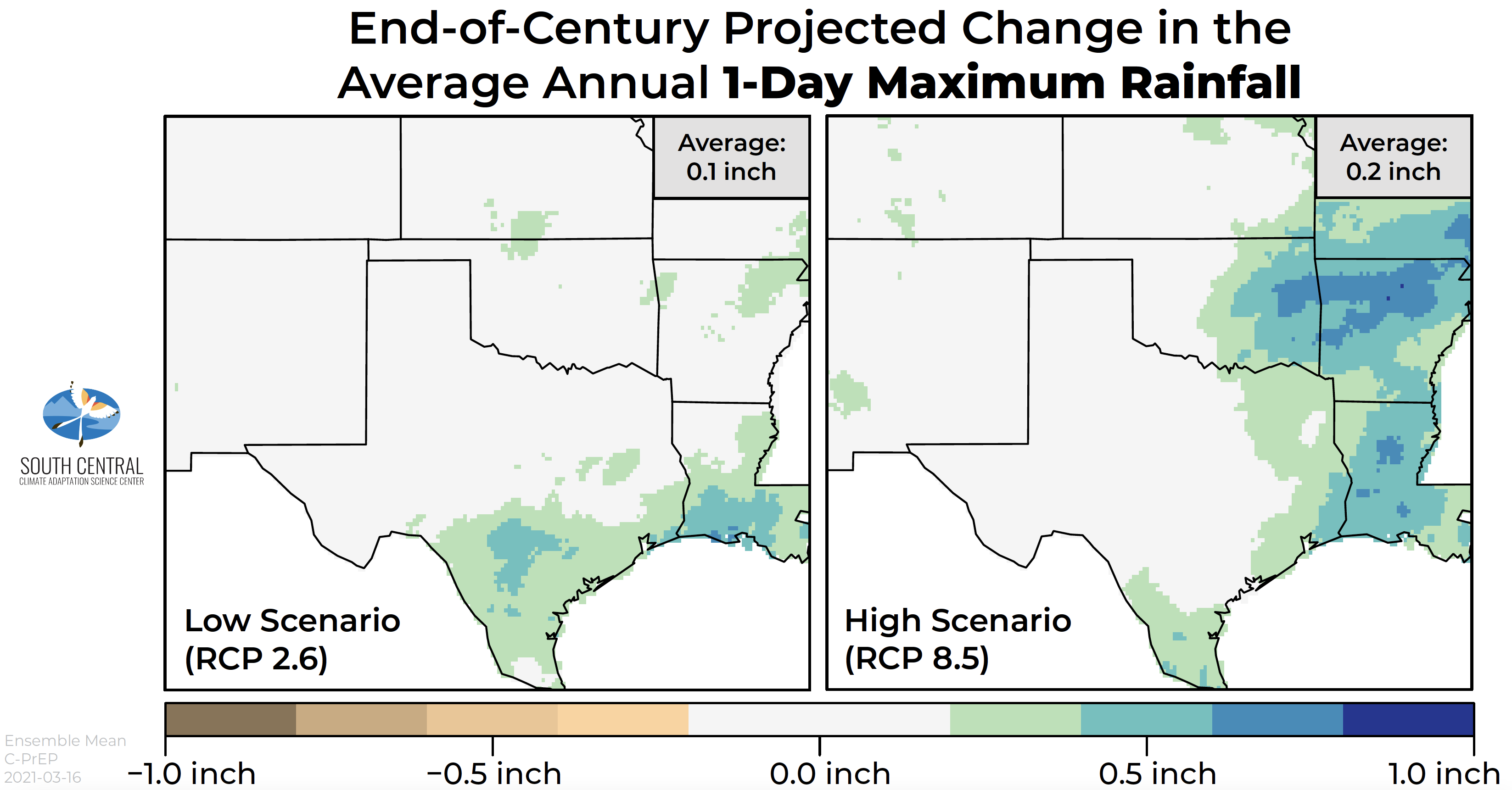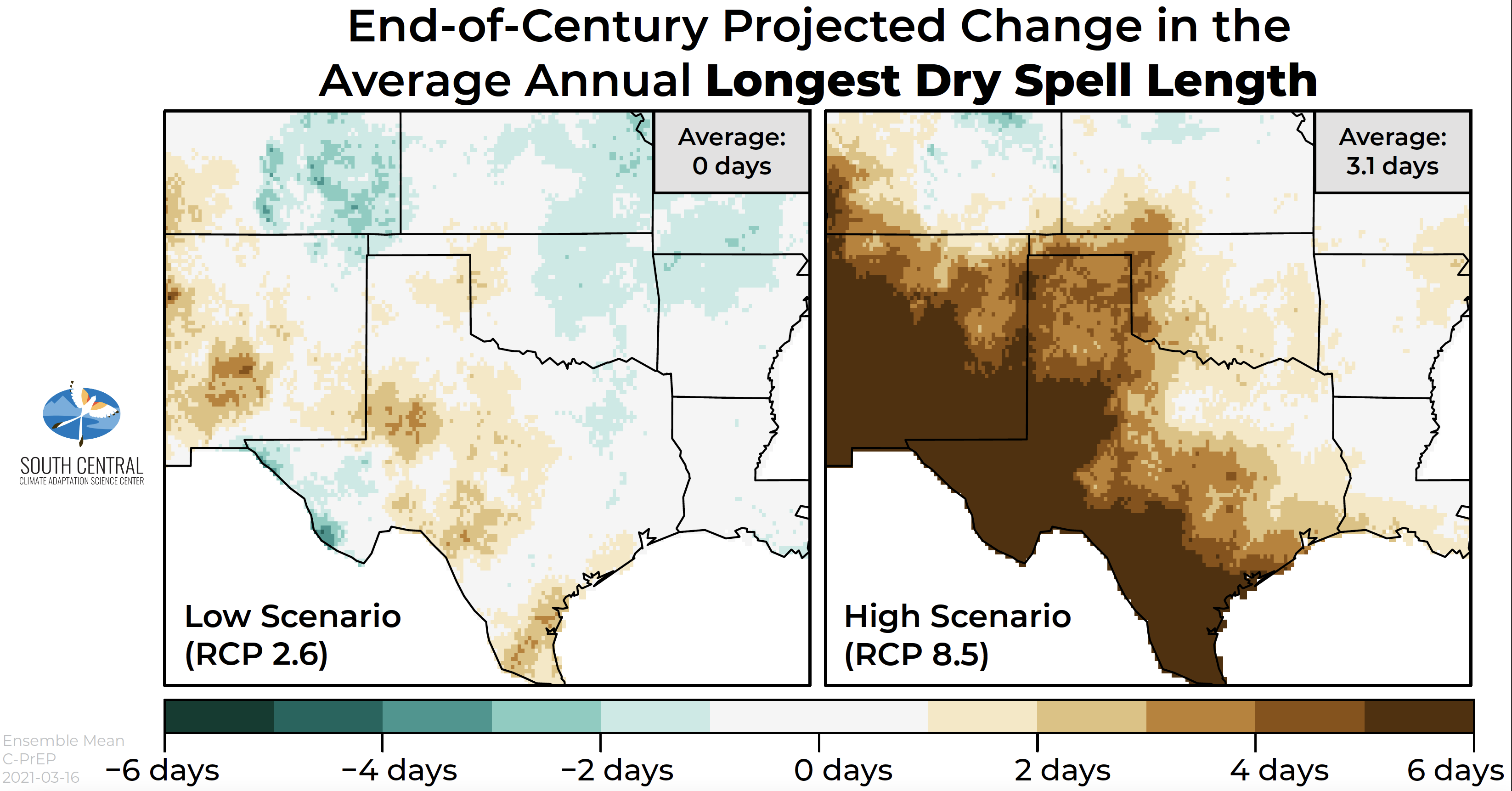Precipitation matters in our region, and we expect a decrease under a changing climate. How much of a decrease is dependent upon the actions society takes today and over the next decade. Below is a selection of our precipitation-based climate projections for the south-central U.S. for mid-century (2036-2065) and end-of-century (2070-2099). Additional precipitation-based climate projections are available upon request.
To learn more about how these projections were created, check out our overview webinar on YouTube: https://youtu.be/qlfMKX0z7gI
Please use this citation for the graphics below: Dixon K.W., A.M. Wootten, M.J. Nath, J. Lanzante, D.J. Adams-Smith, C.E. Whitlock, C.F. Gaitán, R.A. McPherson, 2020: South Central Climate Projections Evaluation Project (C-PrEP), South Central Climate Adaptation Science Center, Norman, Oklahoma, USA. DOI: https://doi.org/10.21429/12gk-dh47
Mid-Century (2036-2065)
Low Scenario
With a significant reduction in greenhouse gas emissions, we expect no change in annual average total rain or snow across the region.
High Scenario
Without a significant reduction in greenhouse gas emissions, there is an expected 4% decrease in annual average total rain or snow across the region.
Low Scenario
With a significant reduction in greenhouse gas emissions, we expect to experience a slight change to the average amount of days without precipitation annually, by mid-century.
High Scenario
Without a significant reduction in greenhouse gas emissions, we expect the average increase of days without precipitation to be greater, with 3 more days annually by mid-century.
Low Scenario
With a significant reduction in greenhouse gas emissions, we expect to experience a slight increase in the average 1-day maximum rainfall amount by mid-century.
High Scenario
Without a significant reduction in greenhouse gas emissions, we expect to experience an increase in the average 1-day maximum rainfall amount, particularly in Louisiana, by mid-century
Low Scenario
With a significant reduction in greenhouse gas emissions, we expect to experience a slight increase in the average 5-day maximum rainfall amount, particularly in eastern Oklahoma, by mid-century.
High Scenario
Without a significant reduction in greenhouse gas emissions, we expect to experience an increase in the average 5-day maximum rainfall amount, particularly in Louisiana and along the Gulf Coast, by mid-century.
Low Scenario
With a significant reduction in greenhouse gas emissions, we expect that no additional days will be added to the average length of the longest dry spell annually by mid-century, but there is variability across the region.
High Scenario
Without a significant reduction in greenhouse gas emissions, we expect that additional days will be added to the average length of the longest dry spell by mid-century. Across the domain, the average longest dry spell will be 1 day longer, but the longest dry spell is expected to be significantly longer from southern Texas to New Mexico.
End-of-Century (2070-2099)
Low Scenario
With a significant reduction in greenhouse gas emissions, we expect little to no change in annual average total rain or snow across the region.
High Scenario
Without a significant reduction in greenhouse gas emissions, there is an expected 6% decrease in annual average total rain or snow across the region.
Low Scenario
With a significant reduction in greenhouse gas emissions, we expect a slight change to the number of days without precipitation annually, by end-of-century.
High Scenario
Without a significant reduction in greenhouse gas emissions, we expect five more days without precipitation annually, by end-of-century.
Low Scenario
With a significant reduction in greenhouse gas emissions, we expect to experience slight changes to the average amount of 1-day maximum rainfall annually by end-of-century.
High Scenario
Without a significant reduction in greenhouse gas emissions, the region is expected to increase in the average amount of 1-day maximum rainfall by end-of-century, particularly in the eastern portions of the region.
Low Scenario
With a significant reduction in greenhouse gas emissions, we expect to experience a slight increase in the average amount of 5-day maximum rainfall annually by end-of-century, but greater increases in southern Texas and along the Gulf Coast
High Scenario
Without a significant reduction in greenhouse gas emissions, the average amount of 5-day maximum rainfall is expected to increase by end-of-century, particularly along the Gulf Coast and eastern regions of the domain.
Low Scenario
With a significant reduction in greenhouse gas emissions, we expect that no additional days will be added to the average length of the longest dry spell annually by end-of-century, but there is variability across the region.
High Scenario
Without a significant reduction in greenhouse gas emissions, we expect the length of the longest dry spell length to increase by 3 more days annually, on average, by end-of-century. The longest dry spell is expected to be significantly longer from southern Texas to New Mexico
